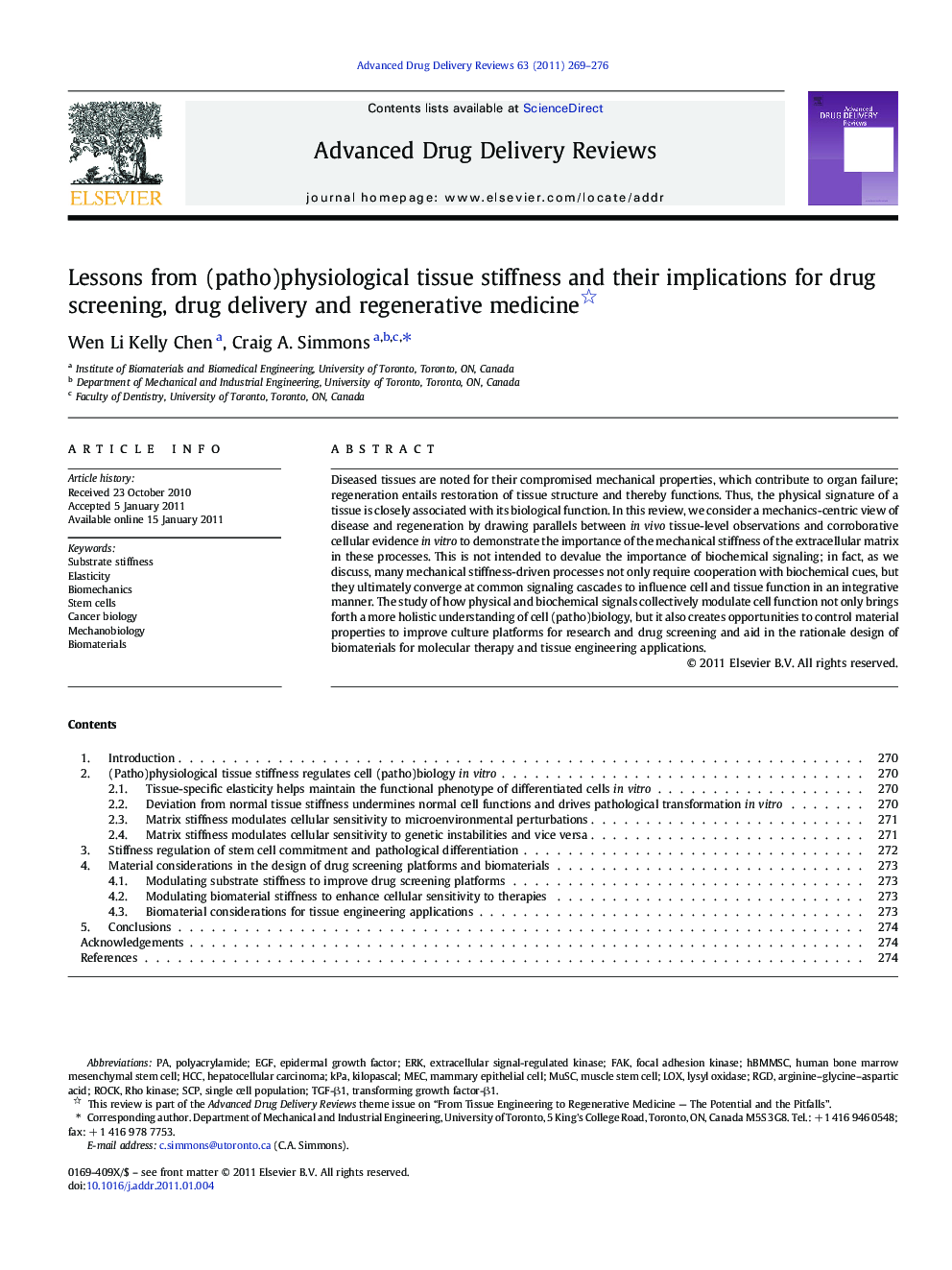| Article ID | Journal | Published Year | Pages | File Type |
|---|---|---|---|---|
| 2071362 | Advanced Drug Delivery Reviews | 2011 | 8 Pages |
Diseased tissues are noted for their compromised mechanical properties, which contribute to organ failure; regeneration entails restoration of tissue structure and thereby functions. Thus, the physical signature of a tissue is closely associated with its biological function. In this review, we consider a mechanics-centric view of disease and regeneration by drawing parallels between in vivo tissue-level observations and corroborative cellular evidence in vitro to demonstrate the importance of the mechanical stiffness of the extracellular matrix in these processes. This is not intended to devalue the importance of biochemical signaling; in fact, as we discuss, many mechanical stiffness-driven processes not only require cooperation with biochemical cues, but they ultimately converge at common signaling cascades to influence cell and tissue function in an integrative manner. The study of how physical and biochemical signals collectively modulate cell function not only brings forth a more holistic understanding of cell (patho)biology, but it also creates opportunities to control material properties to improve culture platforms for research and drug screening and aid in the rationale design of biomaterials for molecular therapy and tissue engineering applications.
Graphical AbstractFigure optionsDownload full-size imageDownload high-quality image (327 K)Download as PowerPoint slide
